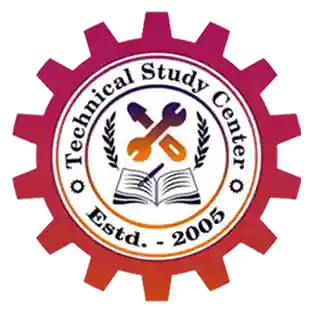The world of manufacturing runs on precision. Every machine part, tool, and industrial component is shaped by the steady hands of a machinist. A machinist is not just a worker but a creator of metal and mechanical parts, ensuring that industries function smoothly.
At Technical Study Center, we train students in the ITI Machinist course with hands-on practice, modern technology, and deep problem-solving skills. We don’t just teach machining; we teach craftsmanship, accuracy, and innovation.
Why Choose the ITI Machinist Trade?
A machinist plays a key role in industries like automobile, defense, railways, aerospace, shipbuilding, and heavy machinery. But becoming a top machinist requires more than just cutting metal—it demands skill, patience, and knowledge of modern tools.
Many students believe that machining is just about operating a lathe. That is a myth. The best machinists understand blueprints, select the right tools, and solve complex mechanical challenges.
At Technical Study Center, we focus on practical training, problem-solving, and modern machining techniques so our students are always ahead in their careers.
The Smartest Way to Learn Machining
. Understanding the Language of Machines – Blueprint Reading
Every great machinist starts with a deep understanding of drawings and blueprints. Many students make mistakes because they jump into machining without reading the design properly.
Our approach:
- Learn to Read & Analyze Technical Drawings – Blueprints are like roadmaps for machines. If you don’t read them right, the final part will not fit.
- Understand Tolerances & Measurements – The smallest mistake in machining can ruin an entire assembly. We train students to measure with micrometers, Vernier calipers, and dial indicators to achieve perfect accuracy.
- Practice Sketching Your Own Designs – Creating simple machine drawings helps students develop a deeper understanding of machining principles.
2. Mastering Manual & CNC Machining
Most machinists only learn manual machining, but today’s industries use CNC (Computer Numerical Control) machines. A successful machinist must know:
- Lathe Machine Operations – The foundation of machining, where students learn turning, facing, threading, and boring.
- Milling & Grinding Techniques – Mastering precision cutting to shape complex machine parts.
- CNC Programming Basics – Learning G-code and M-code to operate computerized machines that manufacture parts with extreme accuracy.
At Technical Study Center, we focus on both traditional and modern machining techniques, ensuring our students are ready for any industry challenge.
3. Developing an Eye for Perfection
Many students think that machining is about speed, but the best machinists prioritize precision over speed. Even a 0.01mm error can cause a machine part to fail.
How we train for perfection:
- Micro-Finishing Practice – Learning how to achieve a smooth surface finish with grinding, lapping, and honing techniques.
- Reverse Engineering Training – Understanding how to recreate a broken or worn-out part with precision.
- Quality Control & Inspection Skills – Learning how to check for defects before the final product is delivered.
A great machinist is like a sculptor, turning raw metal into a work of engineering art.
4. Real-World Problem Solving
Machining is not just about following instructions—it’s about solving real-world problems. At Technical Study Center, students learn:
- How to Reduce Material Wastage – Using correct cutting speeds and feed rates to avoid errors and save raw materials.
- How to Handle Unexpected Machine Failures – Learning quick repair techniques so work never stops.
- How to Improve Production Efficiency – Understanding how to plan machining steps in the right order for maximum productivity.
These small but powerful skills separate an average machinist from an expert machinist.
